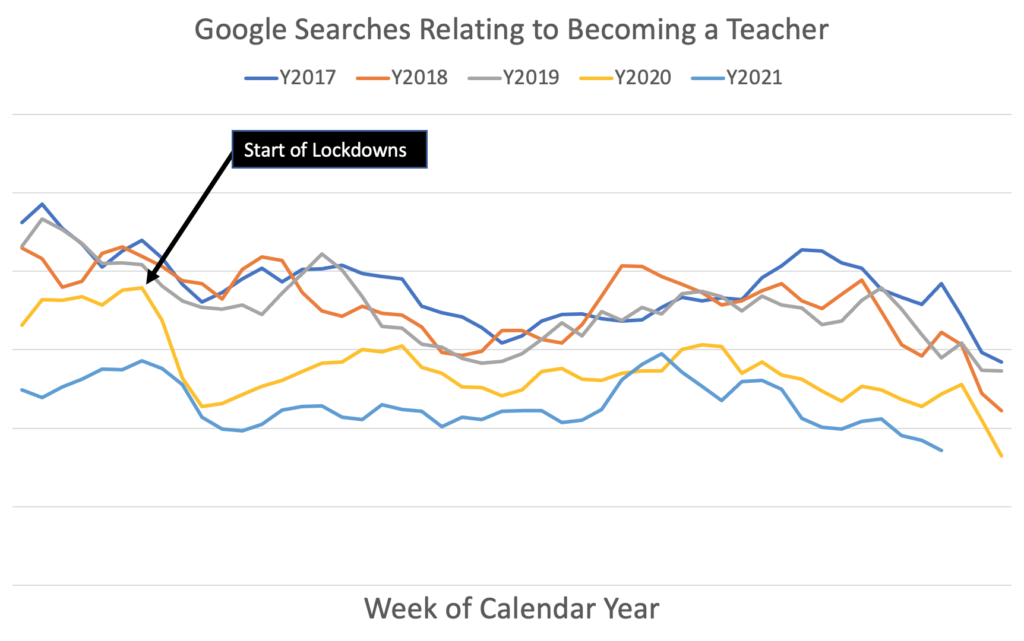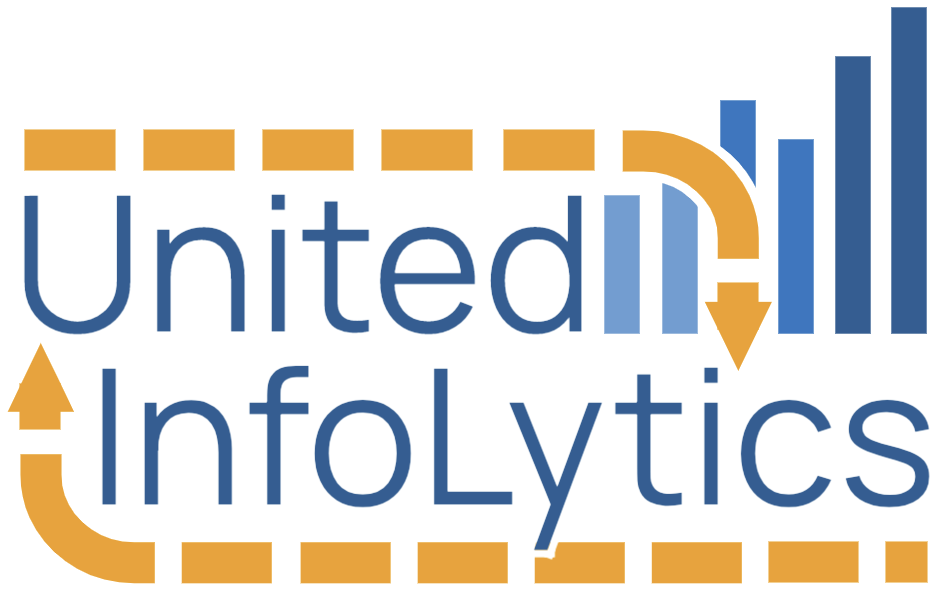Much has been written over the last several decades on the slowly but consistently declining number of new teachers being trained in the U.S. Indeed, 45 of 50 states have seen declining numbers of new teachers being trained—many have seen a 30-50% decrease in the eight years following 2009. Then the COVID-19 pandemic hit and this dramatically affected overall interest in becoming a teacher. While official statistics on this are still pending, we can get a sense of the challenge just by looking at Google Trends, which measures relative interest in a topic by its search volume:

What does this mean for anyone looking to recruit new teachers? They are going to have to work harder, and they will probably have to pay more to be competitive and recruit the number of new teachers needed. Wage growth for college graduates has been strong and has mostly kept up with inflation while teacher wages, traditionally set once per year (or every couple of years) have not kept up as of December 2021.
If you are in the position of needing to recruit more teachers in a tight market with fewer aspiring to enter the field, you’re going to need a great strategy. Here are some things to consider:
- Be active. Don’t just post a job opening or the opportunity to enter a teacher preparation program and wait for people to come to you. You’re going to need to get your opening or your opportunity in front of as many eyes as possible. Consider social advertising, search ads, and platforms such as Handshake to reach out to current college seniors.
- Sharpen your pencil. Keep your job competitive and know what the market alternatives are for those who are interested in teaching. In 2022, you’ll need to consider signing bonuses, retention bonuses, and generally higher base pay in order to get top candidates who have options—both in the world of education and outside it.
- Keep a list. You’re going to need to cultivate relationships with potential applicants even before they start an application. Do you have a career interest form on your website where someone can indicate interest with as little as their name, email and phone number? Do you have a way to communicate in an ongoing manner about deadlines and openings—and what sets your school or your teacher preparation program apart? Essentially, you need a recruiting/hiring CRM to keep contacts, organize interactions, and track people through the initial contact to hiring funnel.
- Use predictive analytics to help you focus outreach on those most likely to apply and commit. If you’ve taken the step of starting to keep a list of people who are at least a bit interested in your school or your program, that’s wonderful! But as soon as your list gets a bit larger, do you have a system in place to know where to focus your efforts? Who should you call or text today to start a conversation? Do you know which fields in your prospective applicant database are most predictive of someone actually applying and ultimately being hired? Predictive analytics, machine learning, and AI can help. United InfoLytics can help.
- Get a dashboard. Do you know where you are in your recruiting efforts relative to this time last year? What about 3 or 4 years ago? How would you know in advance that you’re not on track to filling your positions with high-quality people? Dashboards are key to knowing where you’re at and knowing which efforts are making a difference. When it comes to designing a dashboard, don’t just make a point in time dashboard that tells you a bunch of numbers as of today. Instead, you need to be able to see trends and compare them to prior year baselines. In the same way that the graph above would be meaningless without the prior year data, a dashboard that only tells you about your numbers as of today is like a speedometer without a scale. United InfoLytics can help here as well.
